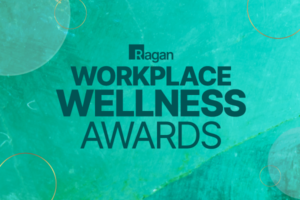How to prioritize wellness at small organizations
We spoke with Katarina Matic of Montieth and Company about how even the smallest shops can be wellness leaders.

These days, an organization’s commitment to workplace wellness can be one of the most important influences on employees’ sense of work-life balance. As more people across the country seek to focus on their health and sense of wellbeing, organizations have been challenged to step up and provide programs that cater to this trend.
But how can smaller companies with limited headcounts and budgets keep up and attract and retain the best talent in the field with an employer value proposition that resonates? Additionally, how can they find ways to measure whether their tactics are finding success with employees? We spoke with Katarina Matic, global senior director at Montieth and Company, about some of the things that smaller organizations can do to stay ahead of the curve on wellness trends and wellness lessons that can be universally applied.
Finding the moving target
It all starts with discovering what your employees need to fulfill their healthiest sense of self. At smaller companies, that can evolve and change over time with shifting staff changes and business priorities. When things are moving that fast, small businesses can discover what wellness marks they need to hit by looking for patterns.
“When you roll out wellness initiatives at a small company, it’s much easier to see the impact of your efforts because you can use surveys that can cater better to individual needs,” said Matic. “It can sometimes be a bit of a moving target in finding what works, but having a personal touch in wellness is important.”
Matic went on to break down wellness into three buckets — self-care and health, work-life balance, and team building. She said that all three of these wellness aspects must work in harmony to provide employees with everything they need to realize their full selves, particularly at small companies. She added that wellness initiatives at smaller companies should have their impacts felt outside the walls of the business, whether those boundaries are physical or virtual.
“Wellness initiatives like self-care days are a great way for both employees and the company to take a step back from highly stressful situations,” Matic said. [They] enable us to gain some perspective on what grounds us.”
Measuring wellness at small companies
Smaller organizations are often especially challenged when it comes to measuring the success of wellness initiatives. Matic explained how she’s been tracking successes at Montieth and Company since the organization instituted new wellness programs during the pandemic.
“In our case, a lot of our success metrics come from anecdotal sources that we get from our employees,” Matic said.
“Asking our employees what they need to perform their best at work does well to inform us of the sort of wellness initiatives we need to either roll out or expand upon. By surveying our employees, instituting the proper wellness programs, and then checking in again to see how the employees are utilizing them and responding to them, we can measure successes on a smaller scale.”
Taking a bottom-up approach to make it happen
It’s all well and good to design wellness programs for the staff of a small organization, but if the initiative isn’t properly implemented or shared with the staff, it might go underutilized to the detriment of the employees and the company. To avoid this, Matic recommends taking the perspectives of all employees into account from the outset, rather than just mandating what might sound nice from the top.
“I think a bottom-up approach to wellness is much more effective than a top-down one,” she said. “It’s important to hear the perspectives of all possible voices when looking to make wellness policies.”
Although it’s a boutique agency, Montieth and Company has an office in London and another in New York City. While wellness programs should extend to all employees regardless of location, the way they’re rolled out at geographically dispersed organizations can take geographic and cultural sensitivities into account.
Matic went on to say that healthy workplace environments should exist regardless of where employees are in the world. Even if cultural differences might exist surrounding time off or regarding healthcare, wellness should have a singular focus – the wellbeing of employees.
Wellness should exist in a positive culture that values feedback from its employees. That’s the cornerstone of making wellness work, regardless of the size of the organization” Matic said.
Sean Devlin is an editor at Ragan Communications. In his spare time he enjoys Philly sports, a good pint and ’90s trivia night.







